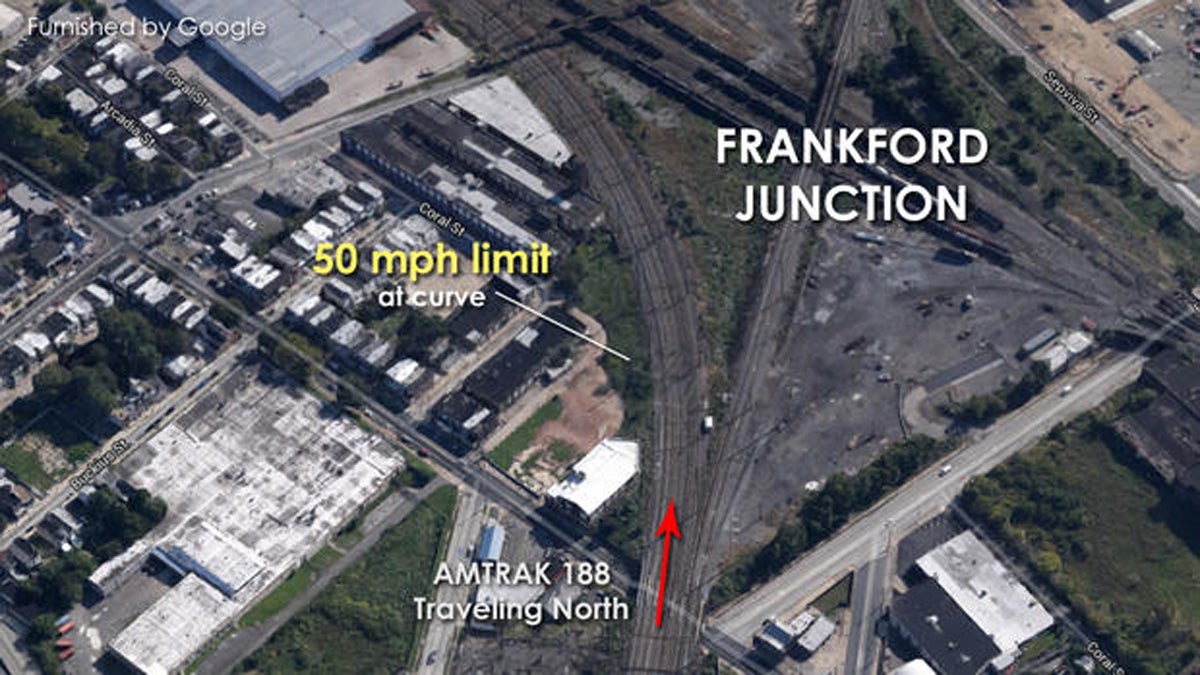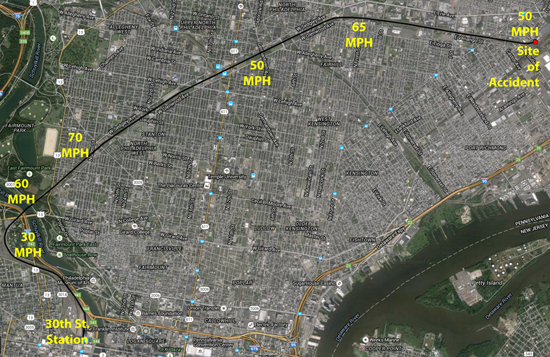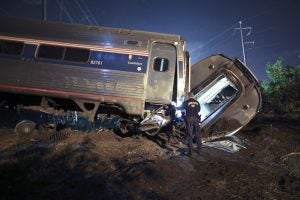Was Amtrak 188 speeding?
Amtrak 188 should have slowed from about 65 mph to 50 mph before entering the curve where it derailed. Federal investigators are exploring whether that happened.

(Map via NBC10)
Amtrak 188 should have slowed from about 65 mph to 50 mph before entering the curve where it derailed. Federal investigators are exploring whether that happened.
At the time of the point of the crash, the speed limit for the doomed Amtrak 188 at the site of the crash was 50 miles per hour. Approaching the curve the speed limit had been 65 mph.
Amtrak 188 was classified “Type B”, Non-Acela train travelling on an inside track.
The train crashed as it entered what Amtrak calls the “Shore Curve.” The speed limit accelerated to 100 mph after the curve.

Investigators are in the process of downloading data from the so-called Black Box. This data will help determine whether speed was a factor in the crash.
Amtrak is in the process of installing a control system designed to prevent train crashes caused by operators exceeding posted speed limits. The system automatically slows down trains that are traveling at speeds beyond posted limits.
SEPTA’s Deputy General Manager Jeffrey D. Knueppel confirmed that Amtrak had not yet installed Positive Train Control (PTC) along the Northeast Corridor in Philadelphia at the time of the accident. PTC is a computer-aided safety system designed to prevent human error that will automatically apply the breaks when the train is travelling at dangerous speeds.
While noting it was too early to speculate on the causes of last night’s accident, Knueppel said that “PTC, in general, would have stopped the train if it was over speeding.”
All heavy rail operators are supposed to install PTC by December 31, 2015, according to a law passed by Congress in 2008 following the deadly Metrolink train crash. Amtrak and SEPTA, which share the track with Amtrak, were two of the only three train operators nationally on pace to comply with the deadline.
PTC would not mitigate the risk of derailment due to track defect, mechanical failure, or items being placed on the track.
Investigators looking into the fatal Amtrak accident last night are currently downloading data from the train’s so-called “black box” on the locomotive’s speed and brake applications.
Retired National Transportation Safety Board investigator Henry Hughes says the mechanical data from the event recorder needs to be combined with crash site observations and regulatory information to be meaningful.
“Say, they say, ok, the speed of the train at the time of the derailment was X, the track investigation group would say ok, based on the engineering design diagrams, the appropriate speed for this curve was Y, and they compare the two, and if there’s a big disparity, well that’s a very important bit of information. ”
Hughes says it could be a year before an official “probable cause” in the crash is named.
An earlier version of this story incorrectly stated the speed limits approaching the crash site.
WHYY is your source for fact-based, in-depth journalism and information. As a nonprofit organization, we rely on financial support from readers like you. Please give today.


